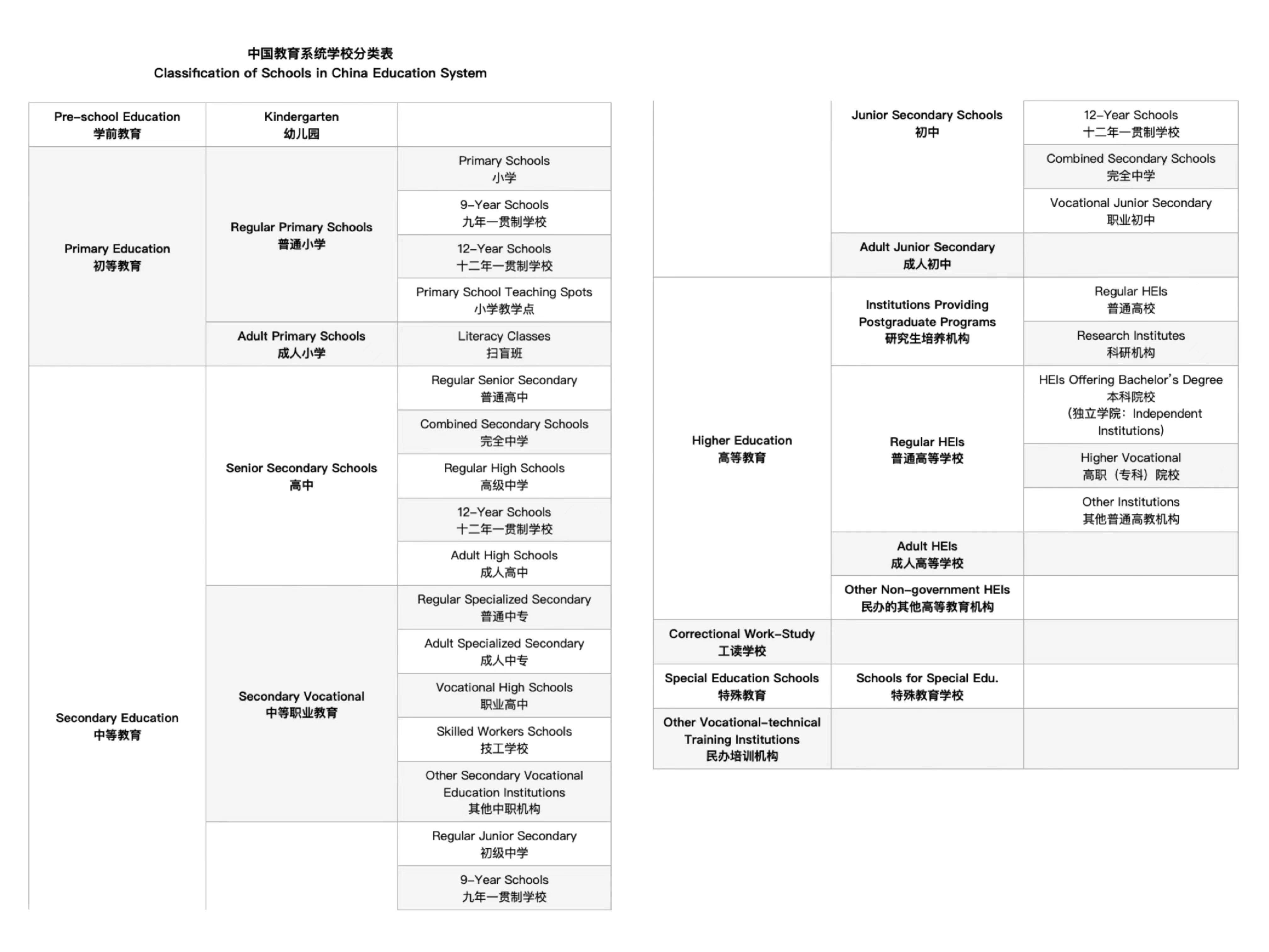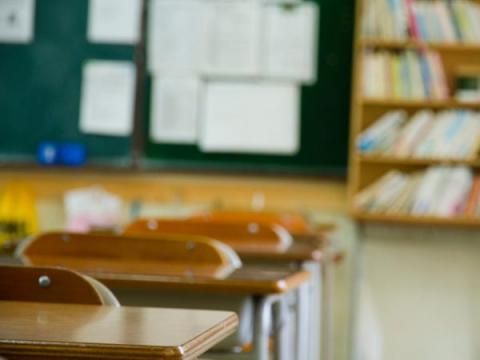This article is written by Hao Xu, General Manager of TopTutorJob. If you have any thoughts and comments after reading this article, feel free to contact the author for further discussions. * Contact information is attached at the bottom. Please note your company or school when you send the friend request.
2020 is the closing year of the 13th five year plan, Chinese government departments, including the Ministry of Education, have made a phased summary of the achievements during the five-year period. As a professional international teacher recruitment service provider in China, TopTutorJob presents you with the statistics and key results from 2020 National Education Development Report released by the Ministry of Education, helping foreign educators have a comprehensive understanding on Chinese education system.
In this article, we will discuss about the following questions:
- How many schools, teachers and students of all kinds at all levels are there in China?
- Among all kinds of schools, what is the proportion of private education?
- In private education, what is the basic situation of internationalized schools, training institutions and kindergartens?
In order to help you better understand the contexts, we are going to present you with the classification of schools in China education system. Please refer to the table below:

How many schools, teachers and students of all kinds at all levels are there in China?
Statistics show that in 2020, China had 537,100 educational institutions serving 289 million students. The number of full-time teachers working in schools at all levels was 17,921,800. The details are as follows:
K-12 Education
| Number of Schools | Number of Students | Number of Full-time Teachers | |
| Preschool Education | There were 291,700 kindergartens. | 17,914,000 children enrolled into kindergarten, bringing the total number of children attending kindergarten to 48,182,600. | There were 2.9134 million full-time kindergarten teachers across the country. |
| Compulsory Education | There were 210,800 compulsory education schools. | The number of new entrants reached 34.4019 million, bringing the total number of students at compulsory stage to 156 million. | The number of full-time teachers in compulsory education was 10.2949 million. |
| Primary Schools | There were 158,000 primary schools. | Offer education to 107.2535 million pupils, including 18.0809 million new entrants. | The number of full-time teachers in primary schools reached 6.4342 million. |
| Junior Middle Schools | There were 52,800 junior middle schools. | There were 49.1409 million students studying in junior middle schools across the country, including 16.321 million new entrants. | The number of full-time teachers in junior middle schools stood at 3.8607 million. |
| Upper Secondary Education | There were 24,400 high schools. | Serve 41.278 million students, including 15.04 million new entrants. | - |
| Regular High School | There were a total of 14,200 regular high schools. | Offer education to 107.2535 million pupils, including 18.0809 million new entrants. | Employ 1,933,200 full-time teachers in total. |
| Vocational Schools | There were 9,865 vocational schools. | Offer education to 16.2814 million students, including 6.2756 million new entrants. | There were 849,500 full-time teachers. |
Higher Education
In 2020, there were 2,738 higher education institutions across the country, 1,270 institutions, including 21 vocational colleges offered Bachelor’s degrees. The number of higher vocational institutions was 1,468.
The total number of students attending undergraduate programs in regular institutions reached 32,8529 million, including 9.6745 million newly-enrolled students. There were 3,139,600 students pursuing master’s degrees, including 1,106,600 first year students.
The number of students were attending adult colleges was 7.7729 million, including 3.6376 million first year students. There were 8.4645 million students attending online institutions, including 2.7791 million newly enrolled students.
A total of 1.833 million full-time teachers were working in higher education institutions in China.
Special Education
In 2020, there were 2,244 special education schools in China, offering education to a total of 880,800 students with disabilities, including 149,000 new entrants and employing 66,200 full-time teachers.

Among all kinds of schools, what is the proportion of private education?
As we compared the number of schools and full-time teachers of all kinds with the number of schools and full-time teachers of private education, we get the following findings:
| Number of Schools | Percentage | |
| Higher Education | There were 434 non-government funded institutions offered Bachelor’s degrees. | Accounting for 34.17% of all undergraduate institutions. |
| High School | There were 3,694 private high school. | Accounting for 25.95% of all regular high schools. |
| Junior Middle School | The number of privately run junior middle schools was 1,296. | Accounting for only 3.71%. |
| Schools Offer 12-year Consistent Education | There were 1,680 schools offering 12-year consistent education. | Private schools accounted for 79.88%. |
| Primary Education | There were 6,187 non-government funded ordinary primary schools. | Accounting for 3.92% of total. |
| Special Education | There were 83 private special education schools. | Accounting for 3.7%. |
| Preschool Education | There were 167,956 private kindergartens. | Accounting for 57.58% of all. |
| Training Institutions | There were 39,516 institutions in total. | All training institutions across the country were privately run. |
The proportion of private institutions in compulsory education stage was quite low. However, in higher education and preschool education, the proportion of private institutions is relatively high.
In addition, the above data was collected in 2020. Under the influence of “double reduction” policy released this year, the proportion of private institutions in the stage of compulsory education will still be further reduced, and the number of private training institutions is expected to be greatly reduced as well.
*If you want to see the detailed data, please scan the QR code below to follow TopTutorJob on WeChat official account, and reply [table] to get the PDF version of the comparison form.

In private education, what is the basic situation of internationalized schools, training institutions and kindergartens?
In TopTutorJob’s school database, as of December 15, 2021, there were 1,265 international schools in total, including 135 foreign nationals schools, 846 bilingual schools and 284 international departments of public high schools. Besides, there were 521 training centers provide international course training or English training, and 486 bilingual kindergartens in total.
To sum up, there are more than 2,300 schools involving in English training, international education and bilingual teaching system. However, the number of registered K-12 private schools reached to over 220,000. The proportion of schools that involve in English training, international education and Bilingual teaching system is only 1% to 2%. If we compare the figure of 2,300 with the overall number of K-12 schools in China, the proportion will fall below 0.1%, which shows that international education and bilingual teaching still have broad space for long-term growth in China.
For more details, you can visit our school database (www.toptutorjob.com/schools) to further search and browse the details of each school.

We also found that the exact number of foreign teachers was officially announced for the first time. There were a total of 17,693 foreign teachers who work in higher education system in China. Among them, 10,383 received doctoral degrees, 4,161 obtained Master’s degrees and 3,072 had Bachelor’s degrees.
However, the number of foreign teachers who work legally in the national education system has not been officially revealed yet. According to TopTutorJob’s report on the the seventh national census conducted in 2020, we reasonably estimate that there are about 100,000 foreign educators currently work in China, including the number of higher education teachers mentioned above. Click here to read the full report.
Scan the QR code to contact the Author on WeChat, or send email to hao.xu@toptutorjob.cn:

